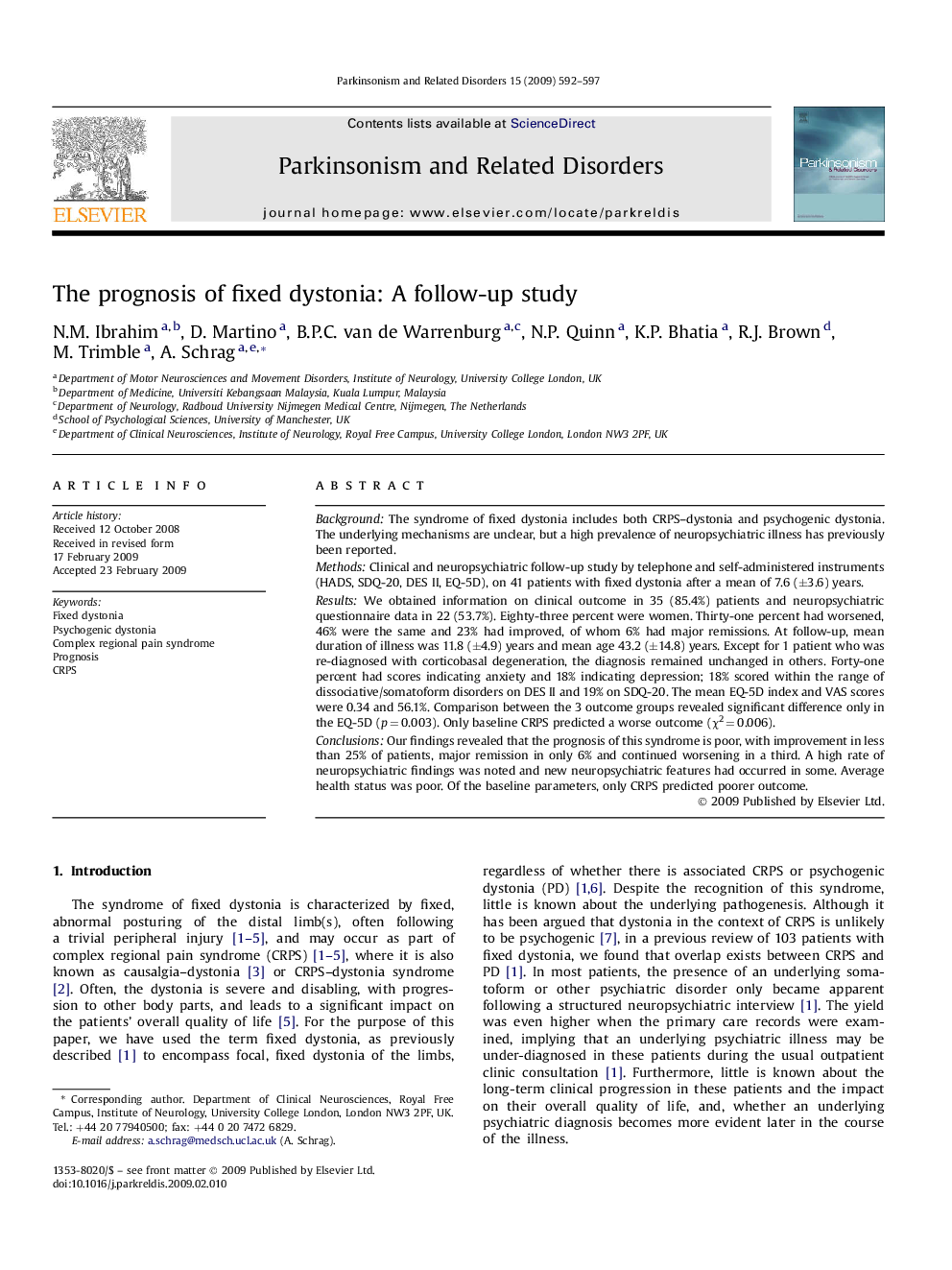| Article ID | Journal | Published Year | Pages | File Type |
|---|---|---|---|---|
| 1921695 | Parkinsonism & Related Disorders | 2009 | 6 Pages |
BackgroundThe syndrome of fixed dystonia includes both CRPS–dystonia and psychogenic dystonia. The underlying mechanisms are unclear, but a high prevalence of neuropsychiatric illness has previously been reported.MethodsClinical and neuropsychiatric follow-up study by telephone and self-administered instruments (HADS, SDQ-20, DES II, EQ-5D), on 41 patients with fixed dystonia after a mean of 7.6 (±3.6) years.ResultsWe obtained information on clinical outcome in 35 (85.4%) patients and neuropsychiatric questionnaire data in 22 (53.7%). Eighty-three percent were women. Thirty-one percent had worsened, 46% were the same and 23% had improved, of whom 6% had major remissions. At follow-up, mean duration of illness was 11.8 (±4.9) years and mean age 43.2 (±14.8) years. Except for 1 patient who was re-diagnosed with corticobasal degeneration, the diagnosis remained unchanged in others. Forty-one percent had scores indicating anxiety and 18% indicating depression; 18% scored within the range of dissociative/somatoform disorders on DES II and 19% on SDQ-20. The mean EQ-5D index and VAS scores were 0.34 and 56.1%. Comparison between the 3 outcome groups revealed significant difference only in the EQ-5D (p = 0.003). Only baseline CRPS predicted a worse outcome (χ2 = 0.006).ConclusionsOur findings revealed that the prognosis of this syndrome is poor, with improvement in less than 25% of patients, major remission in only 6% and continued worsening in a third. A high rate of neuropsychiatric findings was noted and new neuropsychiatric features had occurred in some. Average health status was poor. Of the baseline parameters, only CRPS predicted poorer outcome.
